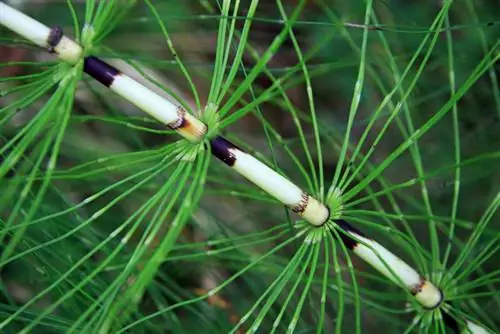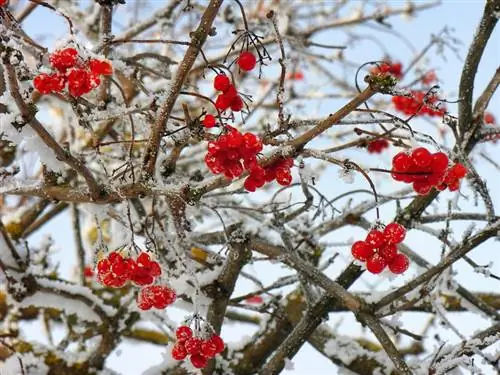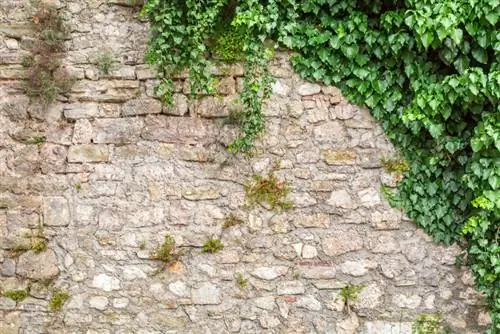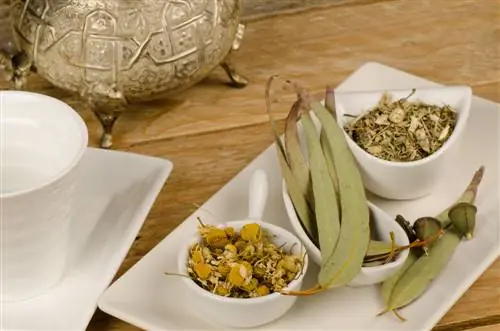- Author admin [email protected].
- Public 2023-12-16 16:46.
- Last modified 2025-06-01 06:02.
Horsetail is certainly not one of the most popular garden plants. The plant is very stubborn and difficult to control. In addition to the field horsetail, which is often seen as a weed, there are also some species that are grown very decoratively in ponds or in pots as ornamental plants. A profile.

What is horsetail and where does it grow?
Horsetail, also known as horsetail or horsetail, belongs to the horsetail plant family and comes in 15 to 20 different species. It grows on compacted soils and has various uses in natural medicine, natural cosmetics and gardening.
Horsetail - A profile
- Botanical name: Equisetum
- popular names: horsetail, scrubweed, ponytail, cat's tail, panbutcher
- Plant family: Horsetail family
- Botanical family: Ferns
- Occurrence: Northern Hemisphere, Japan, Tropics
- Species: 15 to 20 species
- Height: depending on the species 10 to 300 cm
- Location: compacted soils, depressions, ponds, river banks
- Propagation: spores, rhizomes with underground runners
- Flower: no flower, instead a spore spike
- Flowering time: March to June depending on the variety
- Reproduction: spores, underground runners
- Use of field horsetail as a natural remedy: inflammation, sore throat, rheumatism, gout
- Use in the garden: ornamental plant, pond planting, potted plant
- Poisonousness: some varieties such as marsh horsetail are poisonous
- Winter hardiness: hardy
Horsetails contain a lot of silica
Large amounts of silica are stored in the stalks of the horsetail. The proportion can be up to seven percent.
That's why horsetail is used in natural medicine and natural cosmetics.
The silica forms small crystals that make the stems very rough. Horsetail has therefore been used for cleaning and polishing pewter and tableware for centuries. This is where the popular names come from: Horsetail, Pfannebutzer or Scheuerkraut.
Which horsetail species are poisonous?
Not all horsetail species are poisonous. The field horsetail, which is feared as a weed, is edible.
Swamp horsetail and all varieties suitable for ponds, however, are poisonous. This can be a real problem, especially in livestock pastures. Fighting marsh horsetail is almost impossible. Because of the deep-lying rhizomes and propagation via spores, even chemical weed killers such as Round-up fail.
Caution is therefore advised when collecting and consuming, especially since marsh horsetail and field horsetail look very similar at first glance. However, there are differences with which an assignment is possible.
Tip
Horsetail is one of the oldest plants in the world, found on the ancient continent of Gondwana. Even in prehistoric times there were entire forests with horsetails that grew as tall as trees at 30 meters.






